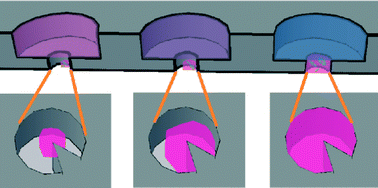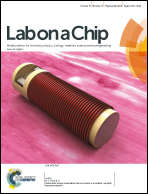Bi-content micro-collagen chip provides contractility-based biomechanical readout for phenotypic drug screening with expanded and profiled targets†
Abstract
Phenotypic screening has regained momentum in the pharmaceutical industry owing to its success over target-based screening. Most phenotypic screening relies on nonspecific biochemical readouts regarding cellular viability, which hampers the discovery of novel drug mechanisms of action (MOAs). Here we present a Contractility-based bi-Content micro-Collagen Chip (3CChip), which establishes cellular contractility as a biomechanics-related phenotype for drug screening. Bi-content analysis of cell contractility (imaged by iPhone) and viability suggests that the label-free contractility-based analysis exhibits superior sensitivity to compounds targeting contractile elements (e.g. focal adhesion, cytoskeleton), resulting in a enlarged target pool for drug assessment. Six typical readout patterns of drug response are summarized according to the relative positions of the contraction/viability curves, and drug targets are profiled into three categories (biomechanical, biochemical and housekeeping) by 3CChip, which will benefit subsequent target identification. The simple-to-use and effective 3CChip offers a robust platform for micro-tissue-based functional screening and may lead to a new era of mechanism-informed phenotypic drug discovery.


 Please wait while we load your content...
Please wait while we load your content...